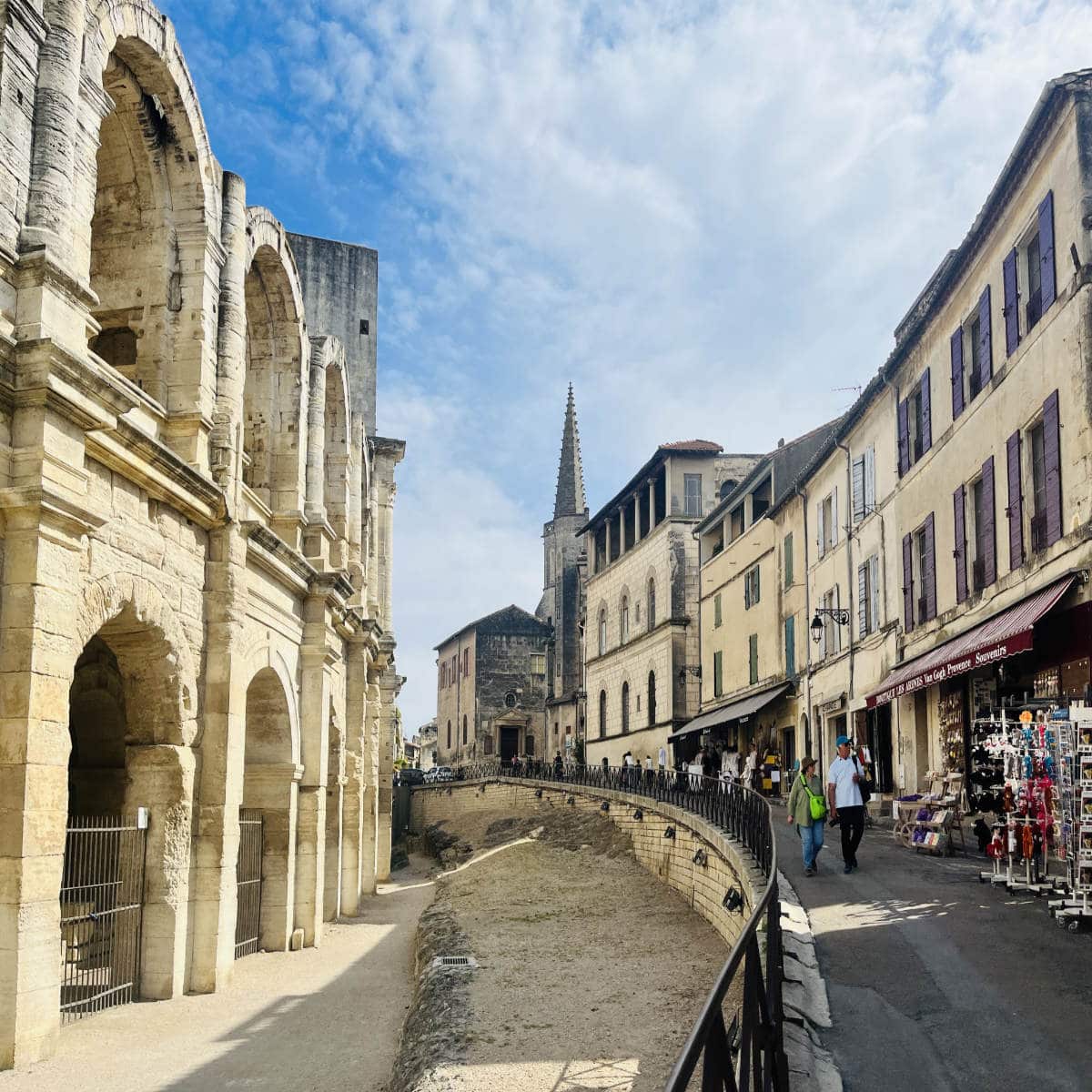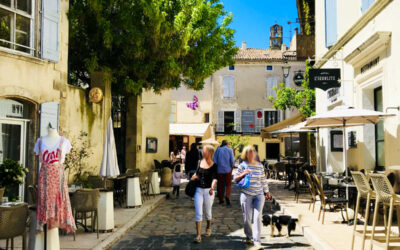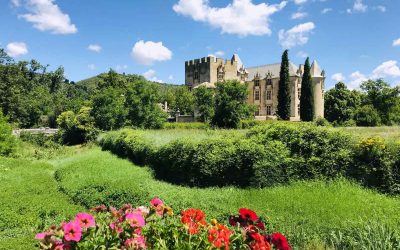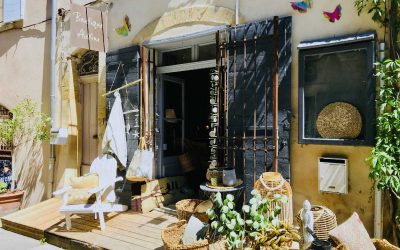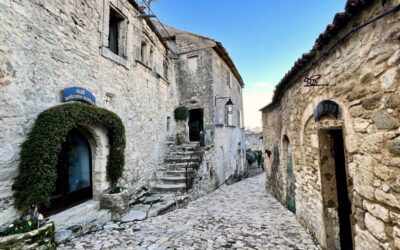The small town of Arles in Provence, was once front and center at the crossroads of history. This was once an important Roman settlement on the crossroads of the Rhône river and the Mediterranean sea, as Caesar and his Empire expanded in Gaul (old France).
Arles is famous for its magnificent amphitheatre, forum, and other Roman buildings, a city that had prospered from trade and commerce. Compared to other nearby Roman cities like Nimes or Marseille, it also has managed to preserve many of its artefacts and ruins.
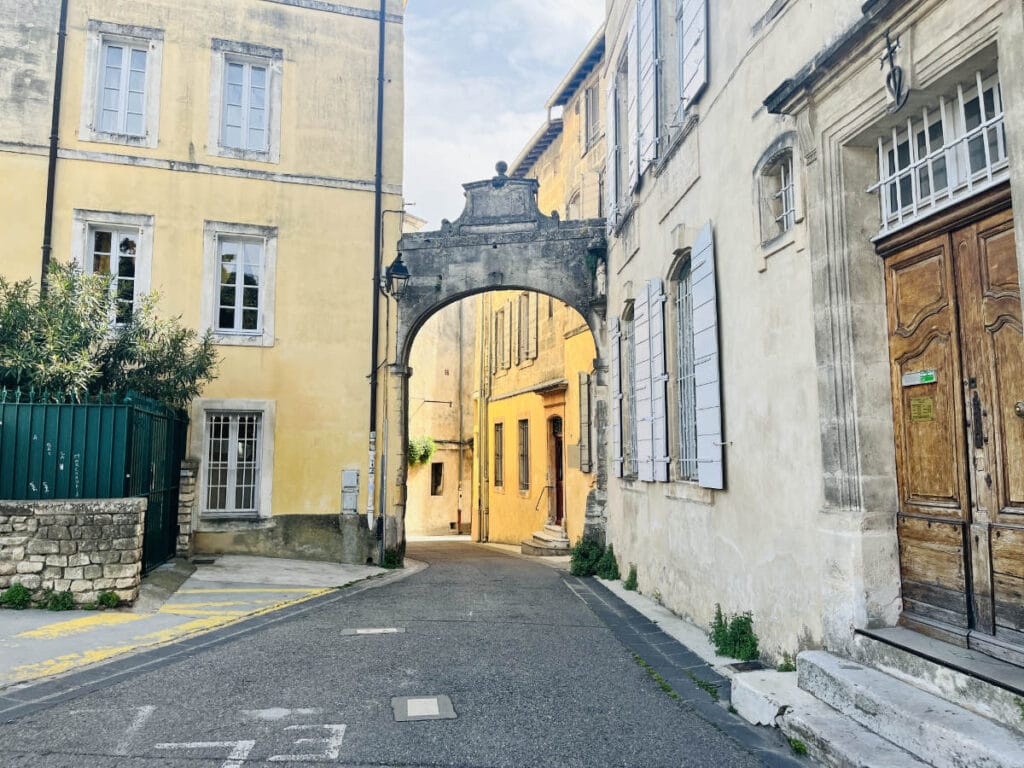
These days Arles is most famous for being the home of Vincent Van Gogh, whose incredible paintings often featured the city. With plenty of provençale charm, Roman ruins, and magnificent architecture, it is easy to see why Van Gogh was so inspired.
Today, it is a city with plenty of picturesque streets, beautiful architecture, wonderful museums and galleries. For nature lovers, Arles is also on the edge of a large natural reserve called the Camargue.
So with that said, if you are planning a trip to Arles, let’s have a look at the top things to see and do in the city, shall we? Allons-y!
- History
- Things to do in Arles
- 1. Amphitheatre
- 2. Roman Theatre
- 3. Fondation Van Gogh
- 4. Place de la République
- 5. Cloître Saint-Trophime
- 8. Thermes de Constantin
- 8. Cryptoporticus
- 9. Place du Forum
- 10. Cafe Van Gogh
- 11. Pont du Gard
- 12. Camargue Nature Park
- 13. Alyscamps (Elysian Fields)
- 14. Musée Réattu
- 15. Amédée Pichot fountain
- 16. Buy some souvenirs
- How to get to Arles?
- How easy is it getting around?
- How many days should you spend?
- Where should you stay?
History
Arles, situated in the southern region of Provence, France, boasts a rich and diverse history that dates back to ancient times. It is known that the Ligurians (tribe from north-west Italy) lived around here in the 8th century BCE, along with the Celts.
rles evolved into a significant Roman city known as Arelate during the Roman Empire.
Its strategic location along the Rhône River contributed to its prosperity, becoming a vital maritime and trading hub. The city witnessed grand developments under Julius Caesar, who founded the Roman colony known as Arelate in 46 BCE.
During the Roman period, Arles emerged as a thriving urban center, featuring impressive structures like the Amphitheatre and various other Roman marvels, including theaters, temples, and the Alyscamps necropolis.
Arles remained a pivotal center of Roman influence until the decline of the Western Roman Empire in the 5th century CE. Over the centuries, Arles experienced periods of turmoil, including invasions in the area by various tribal groups including the muslim Saracens entering through Spain.
The city also witnessed significant political turmoil during the Middle Ages, caught between Kingdom of France and Duchies of Burgundy and Provence. Arles has remained an economic center throughout its history as a major port on the river Rhône.
Today it is blossoming tourist city attracting thousands of visitors every year, while keeping its historical heritage alive.
Things to do in Arles
1. Amphitheatre
The city in southern France has a long history, having considerable importance in the Roman province of Gallia Narbonensis. A clear sign of the city’s importance is the Arles Amphitheatre, that served as a stadium for entertainment and sporting events in the old empire.
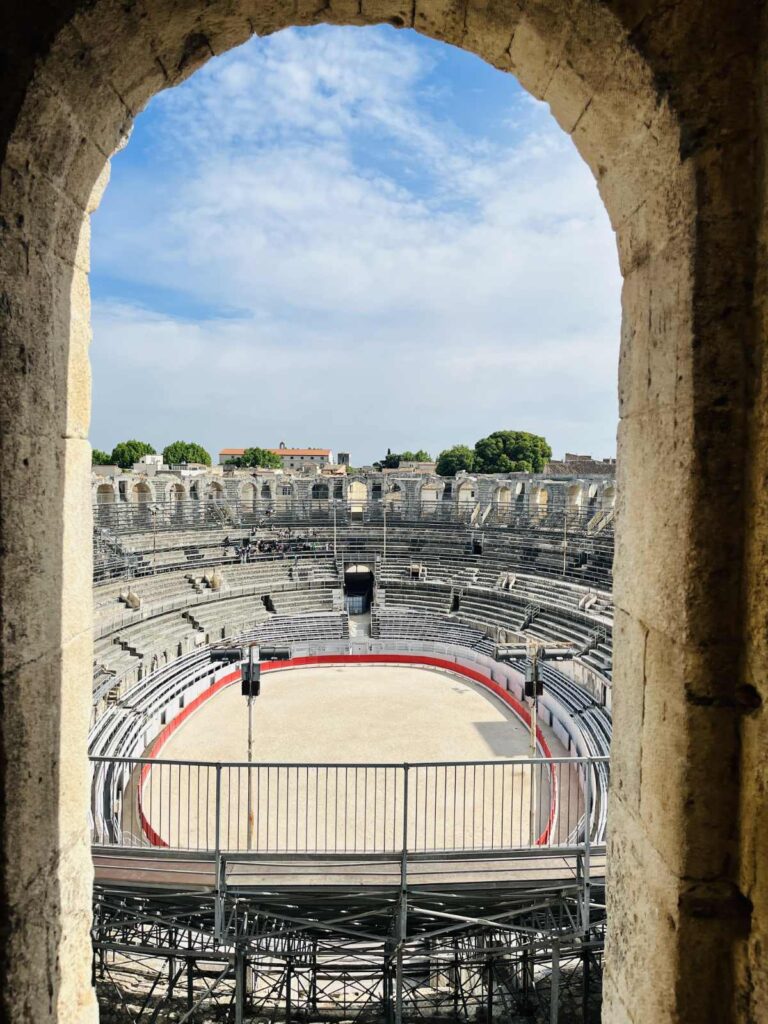
It was built in 90AD, 10 years after the Colosseum was completed in Rome. While the one in Rome is larger holding 65,000 people, the Arles amphitheatre can hold around 20,000. Quite impressive for a town that still only has a population of around 50,000.
Tickets cost around €7 per person, but there are a couple of multi-attraction tickets that you can purchase to visit several of the Roman ruins together.
2. Roman Theatre
Within a few 100 yards of the Arles amphitheatre is the Roman theatre. While gladiators provided the entertainment in the amphitheatre, this Roman theatre was for plays and musical acts.
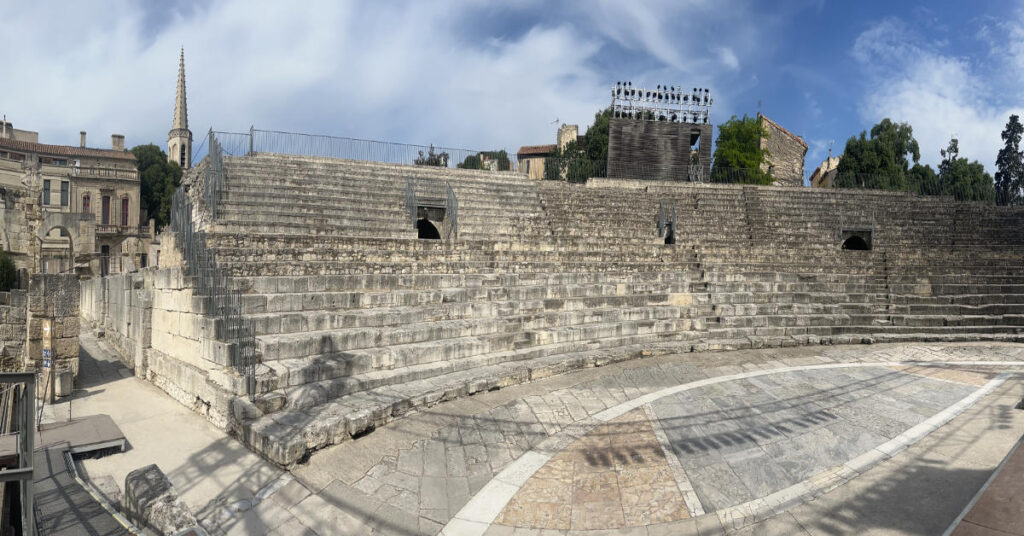
The Roman theatre is actually older than the amphitheatre, having been completed nearly 100 years earlier in 12 BC. It was built to seat around 10,000 people. There is a similar arena in Paris, called the Arènes de Lutèce.
At the time, it was highly decorated with statues and sculptures. The famous Venus of Arles, which is now in the Louvre museum, was discovered here during excavations of the ancient theatre.
3. Fondation Van Gogh
About 5 minutes away from the old roman ruins is the very modern building of the Fondation Van Gogh dedicated to the works of the artist in Arles.
It is in this city that Van Gogh painted many of his famous pictures including the bedroom where he lived for 14 months.
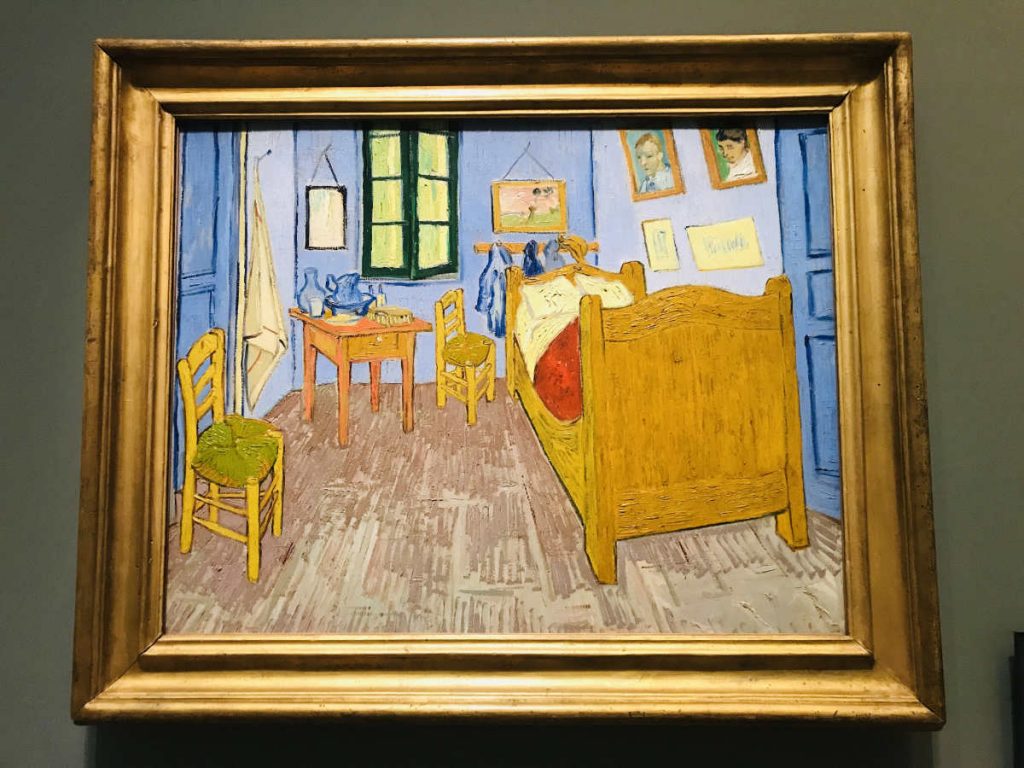
Van Gogh also invited the artist Paul Gauguin to Arles and the two artists lived and painted together for a couple of months. It is also here that Van Gogh suffered a mental breakdown, and cut off a part of his left ear.
He would eventually commit himself to an asylum in nearby St. Remy de Provence. He eventually killed himself at the age of 37 in Auvers-sur-Oise, a suburb outside Paris.
You can take a private tour exploring Arles and around Provence as Van Gogh saw it.
4. Place de la République
One of the largest central squares in Arles is the Place de la Rèpublique. In the center is the Obélisque d’Arles (“Arles Obelisk”), a 4th-century Roman obelisk erected in front of the Hotel de Ville (town hall) of the city.
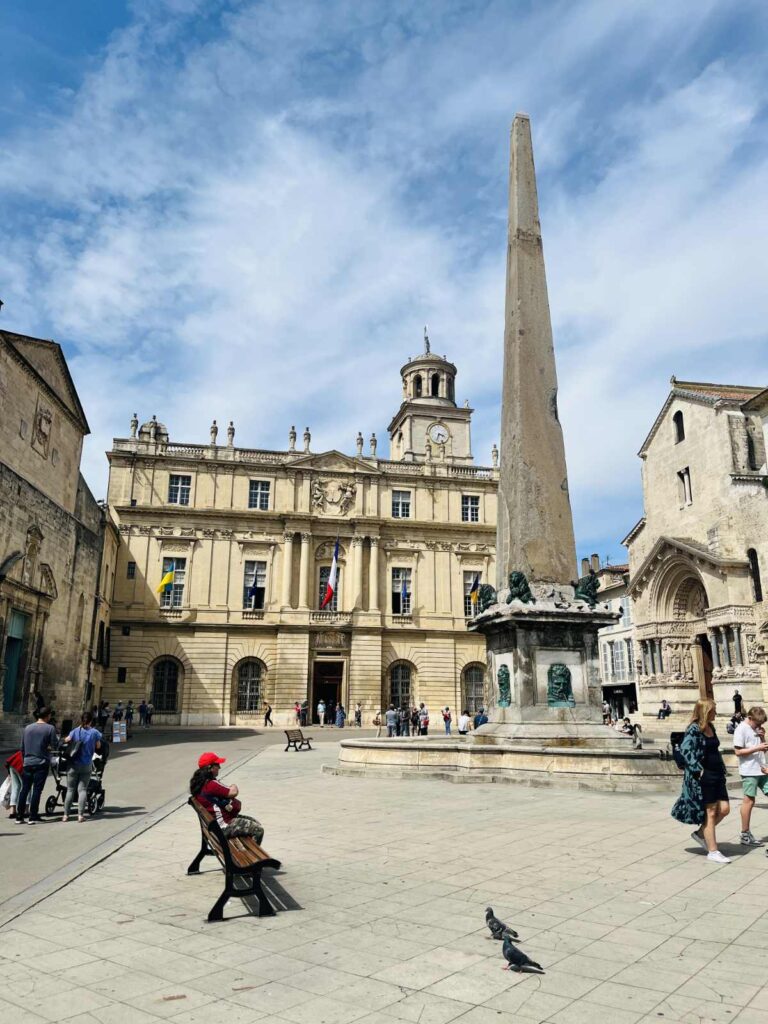
It was first erected under the Roman emperor Constantine II (son of Constantine the Great) and doesn’t have any preinscriptions.
5. Cloître Saint-Trophime
Right across from the obelisk in Place de la Rèpublique is the entrance to the Cloître Saint-Trophime. This former ancient cathedral of Arles dates back to the 12th century.
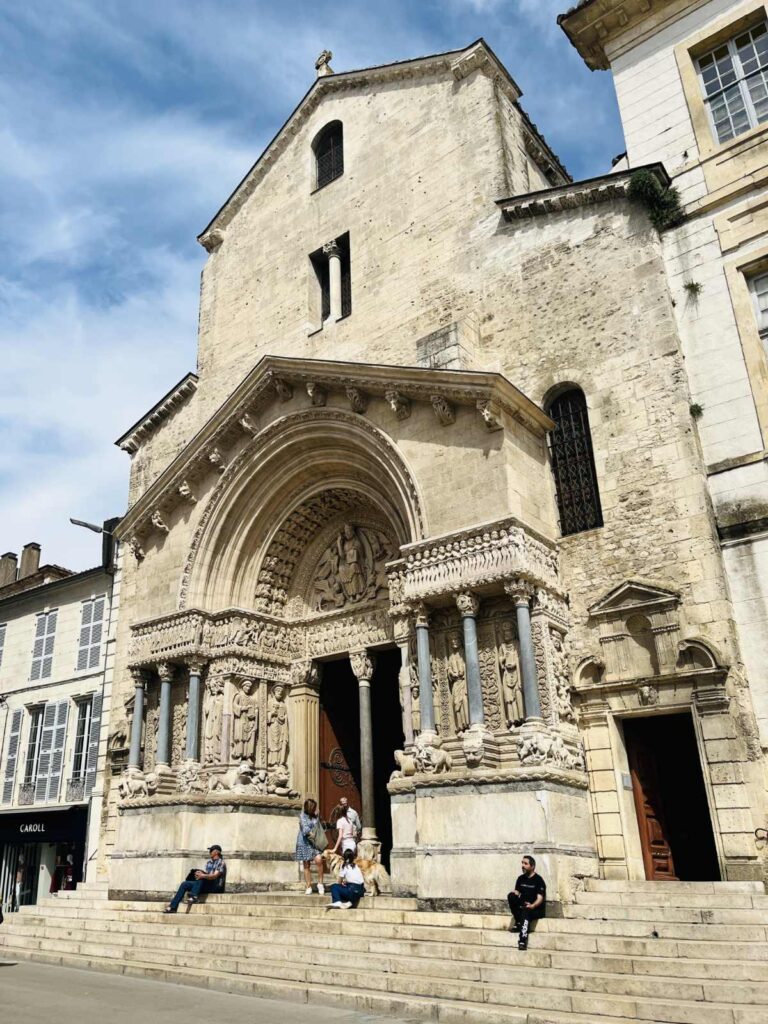
It is in a romanesque and gothic style and is dedicated to the saints Trophime, Stephen, Peter, and John. Carvings of them can be seen inside the cloister, which has a large central courtyard to enjoy.
Inside, there are exhibitions on the history of Arles, as well as paintings and tapestries dating back to the Middle ages.
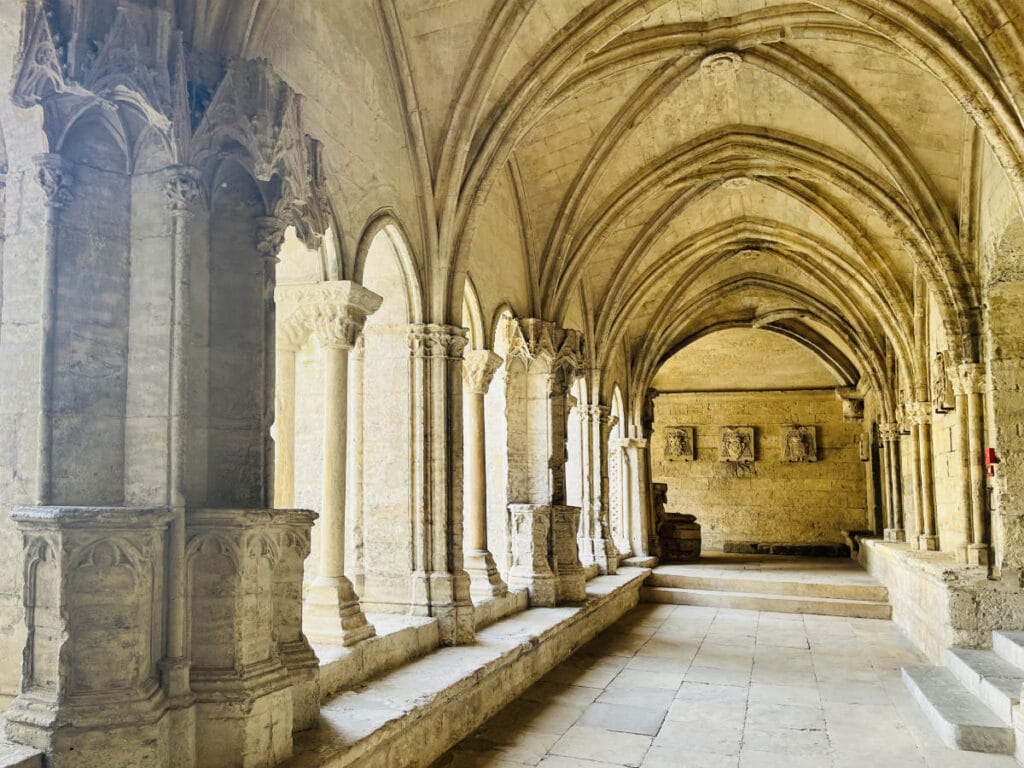
8. Thermes de Constantin
Along with gladiator sports and the theatre, the Romans were also very fond of the baths. Built in the 4th century, these baths were believed to have been constructed when Emperor Constantine I resided in Arelate as the city was known.
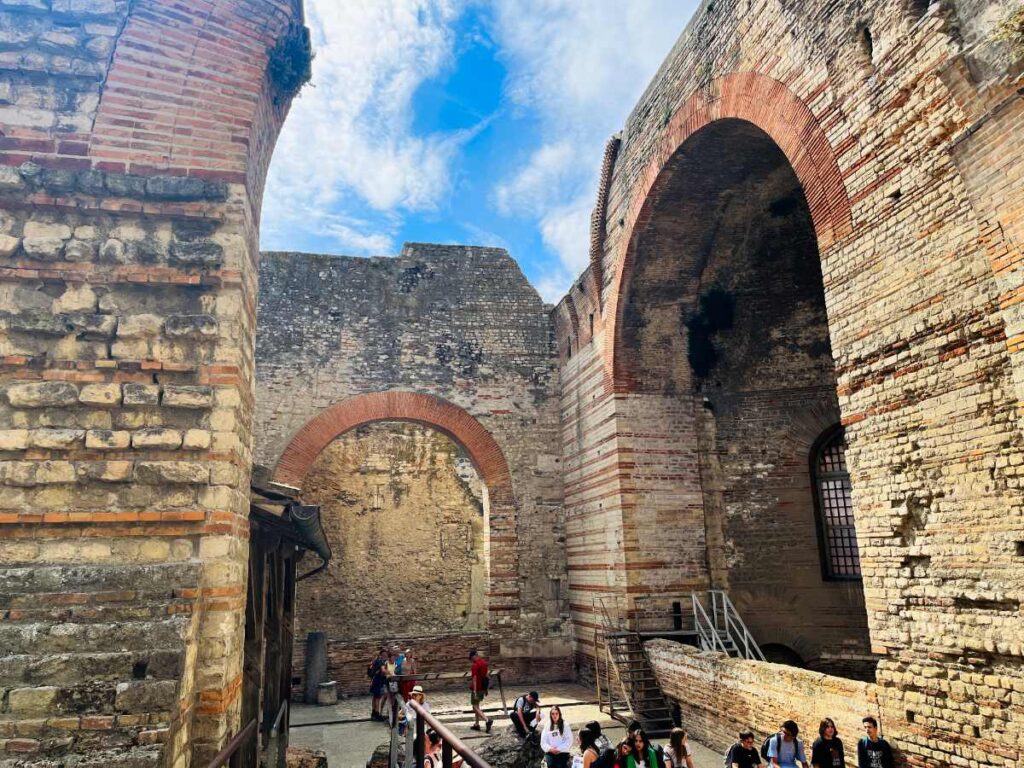
Nearly 3900sqm with grand arches and multiple levels, the bather was required to travel a circuit of hot and cold springs in an effort to restore good health.
The Thermes de Constantin are among the best preserved in France, along with the Thermes de Chassenon in Charente and the Thermes de Cluny in Paris.
8. Cryptoporticus
One of the most surprising roman sites still in existence in Arles is the Cryptoporticus. It has a hidden entrance inside the Hotel de Ville of Arles (city hall), and goes deep underground below the streets.
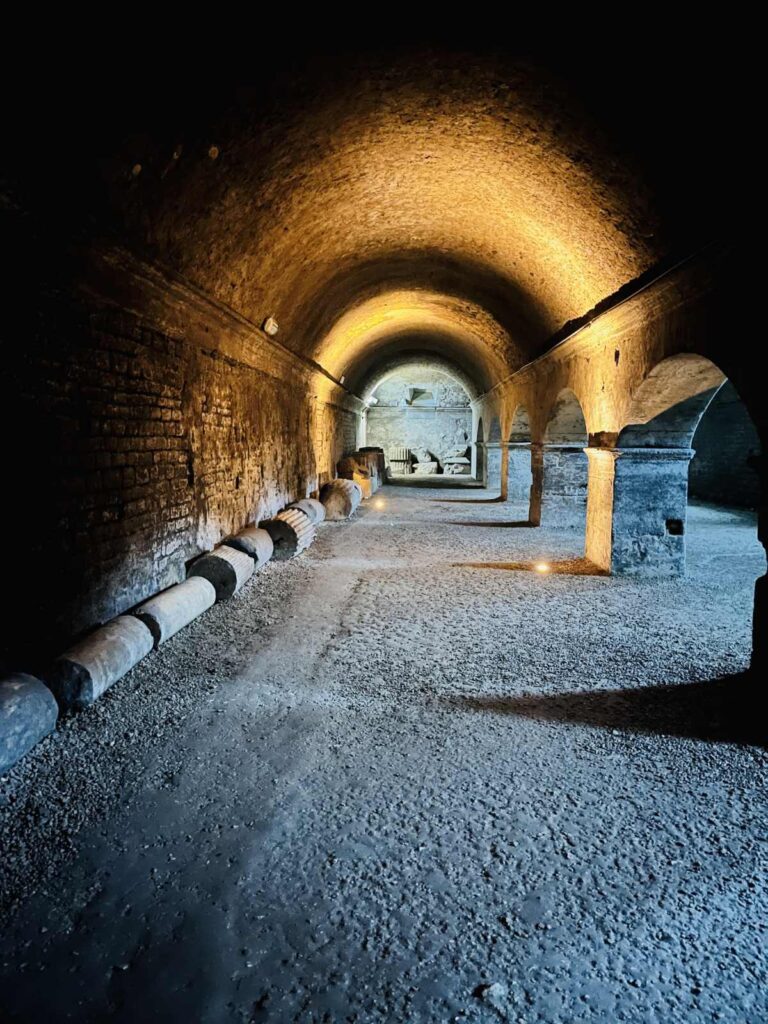
It can be quite tricky to find and is completely hidden from the world above. The area is a subterranean gallery dating from the 1st century BC, that was built as foundation for the forum and as a type of basement storage.
Inside you will see pictures of how the large square Place du Forum was at its height, culminating in the grand building that was meant as a meeting and market place.
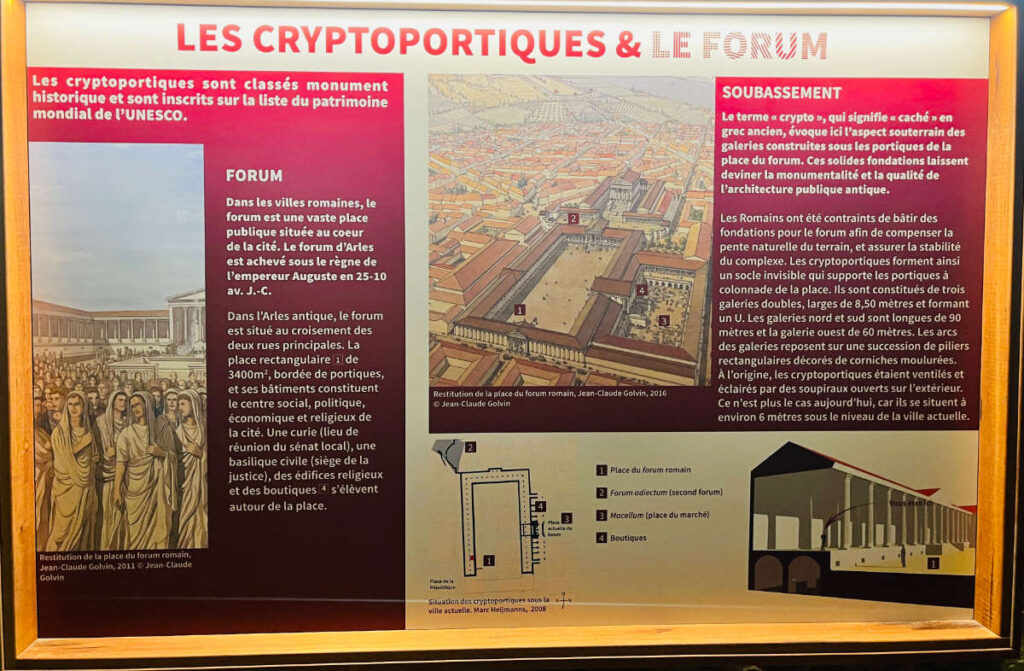
9. Place du Forum
When you first get to the Place de la Forum, you are greeted with a statue of the French writer Frederic Mistral, who championed the local languages Occitan and Provençale.
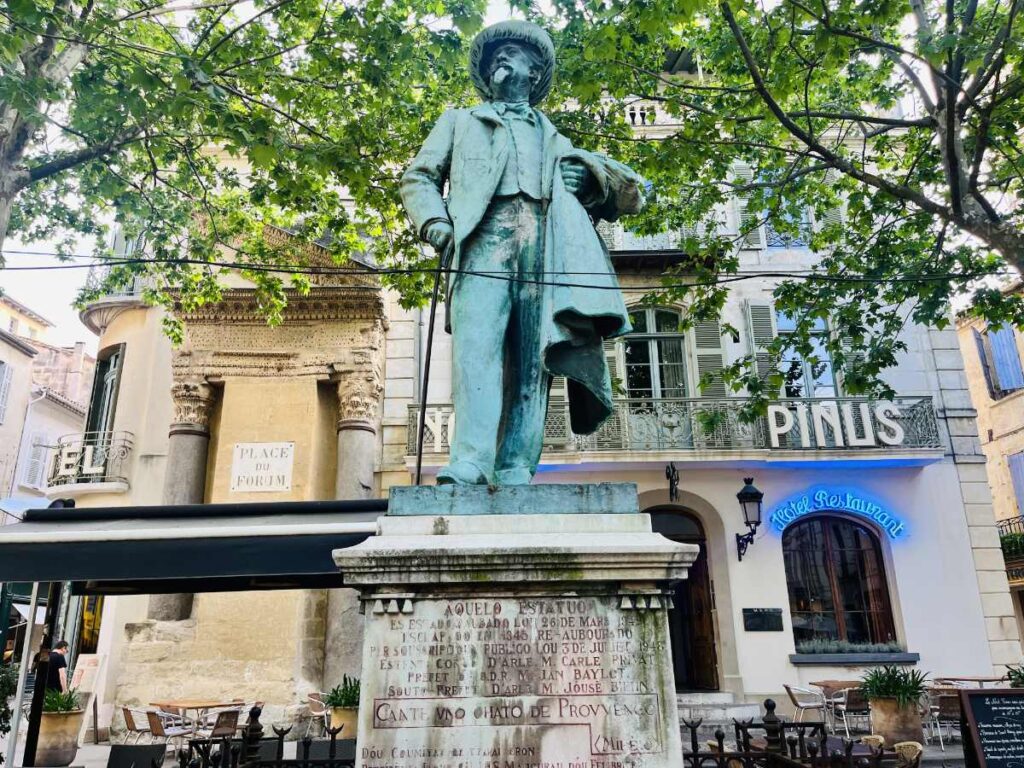
However, in the background on the left, you will notice what remains of the ancient Place du Forum. This is the only portion above ground that has been preserved on the side of a hotel.
It is quite a few steps away from the Cryptoporticus, giving an indication of how grand the Place du Forum was in its heyday.
10. Cafe Van Gogh
Arles is also home to dozens of lovely restaurants with the finest of French cuisine, but there is one particular café that always attracts a lot of attention.
Located on one side of the Place du forum is a small restaurant on the ground floor of a bright yellow building. This was the famous cafe that was inspired Van Gogh’s painting Café Terrace at Night (1888).
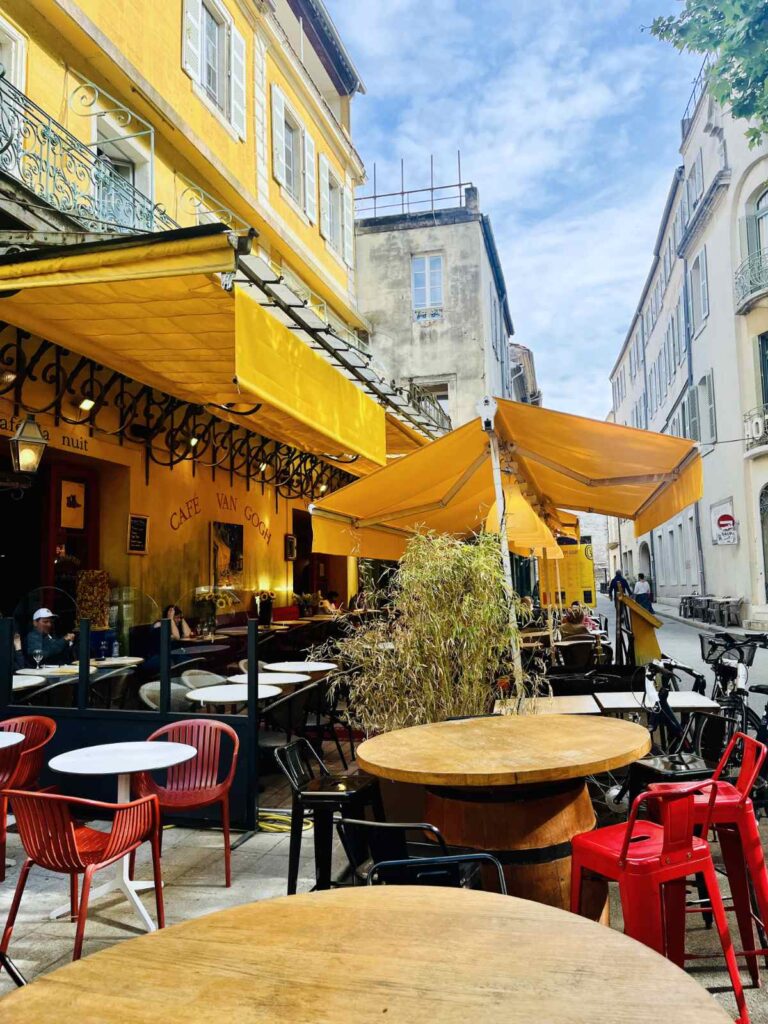
The owners have maintained the same bright yellow awning and renamed the restaurant as Café Van Gogh. The restaurant serves a lot of the typical classics of Provençale cuisine, but doesn’t have the greatest reviews in terms of true gastronomy.
11. Pont du Gard
About 45 minutes away from Arles is the famous Roman aquaduct called Pont du Gard. Built over a period of 5 years in the 1st century, the aqueduct was built to carry water to over 50 km (31 miles) to the Roman colony of Nimes.
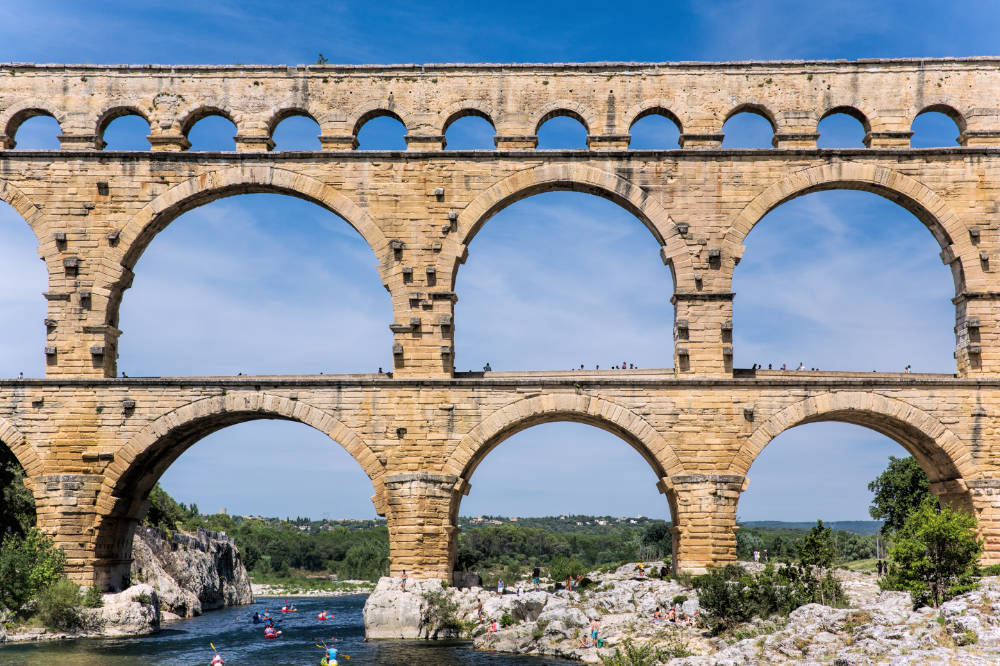
With 3 tiers of arches, it crosses the river Gardon and is the highest of all Roman aqueduct bridges, as well as being one of the best-preserved.
After the Roman empire collapsed, the Pont du Gard remained in use as it also served as a toll bridge for people looking to cross the river. The bridge remained mostly intact, with the Ducs of nearby Uzès being responsible for maintaining the bridge.
Rather than delivering water, the bridge instead became a tourist attraction, with everyone from French Kings to apprentice masons making their way to the bridge to admire its architecture.
In the early 2000s, traffic around the area was rerouted to preserve this UNESCO world heritage site and from pollution and maintain the tranquil nature of the area. Today, it is one of the most popular destinations in France.
You will need a rental car to visit, or alternatively you can book a tour with transport.
12. Camargue Nature Park
The Camargue national park near the city of Arles, is known for its unique wetlands and horse-riding culture that attract visitors from far and wide.
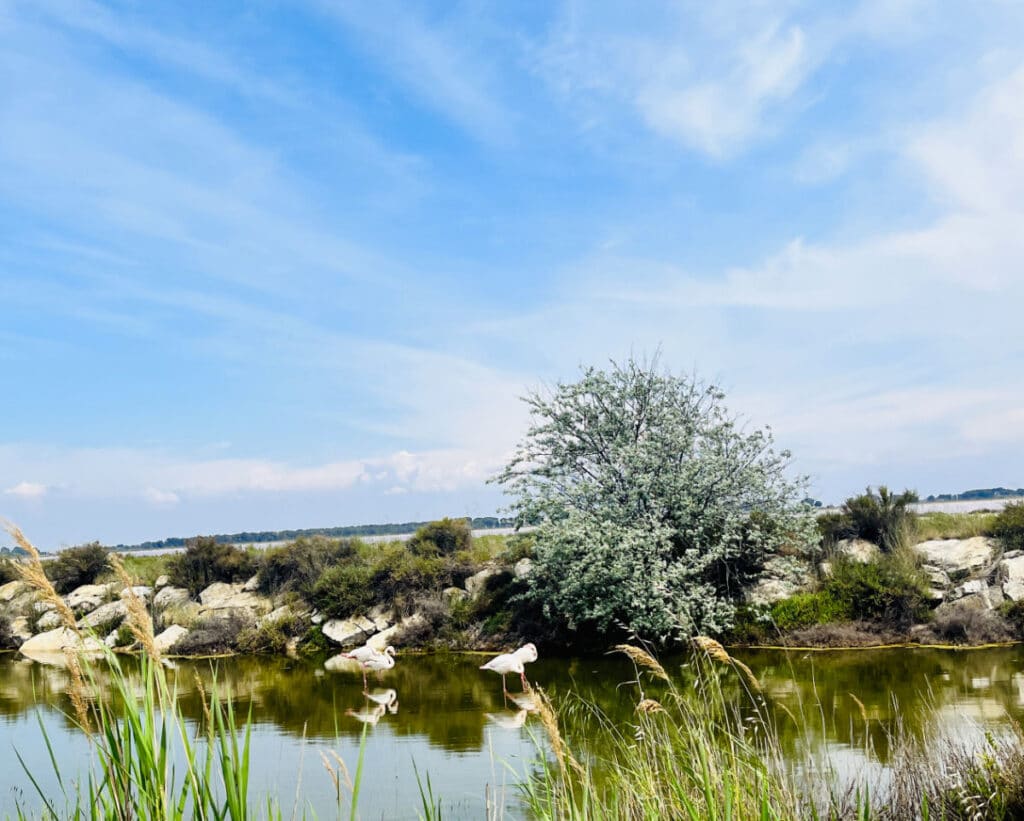
Located near the French-Spanish border, the locals have a culture of their own with a tradition and cuisine that is heavily influenced by its next-door neighbour, Spain.
From tapas to bull-fighting festivals, this is an area that is unique in France. The Camargue also has an eponymous horse breed, the famous white Camarguais which are raised in almost wild conditions.
The Camargue is also known for its sea salts that are produced by drawing seawater into marsh basins and allow the water to evaporate, leaving behind the salt. Some salt crystals float on the surface of the water, forming a delicate crust of crystals that is called fleur de sel. You can read more about taking a guided tour to the Camargue from Arles.
13. Alyscamps (Elysian Fields)
For history buffs, one of the most famous necropolises of the ancient world is located just outside the walls of the Old town of Arles. Romans required burials outside the city limits, hence the location.
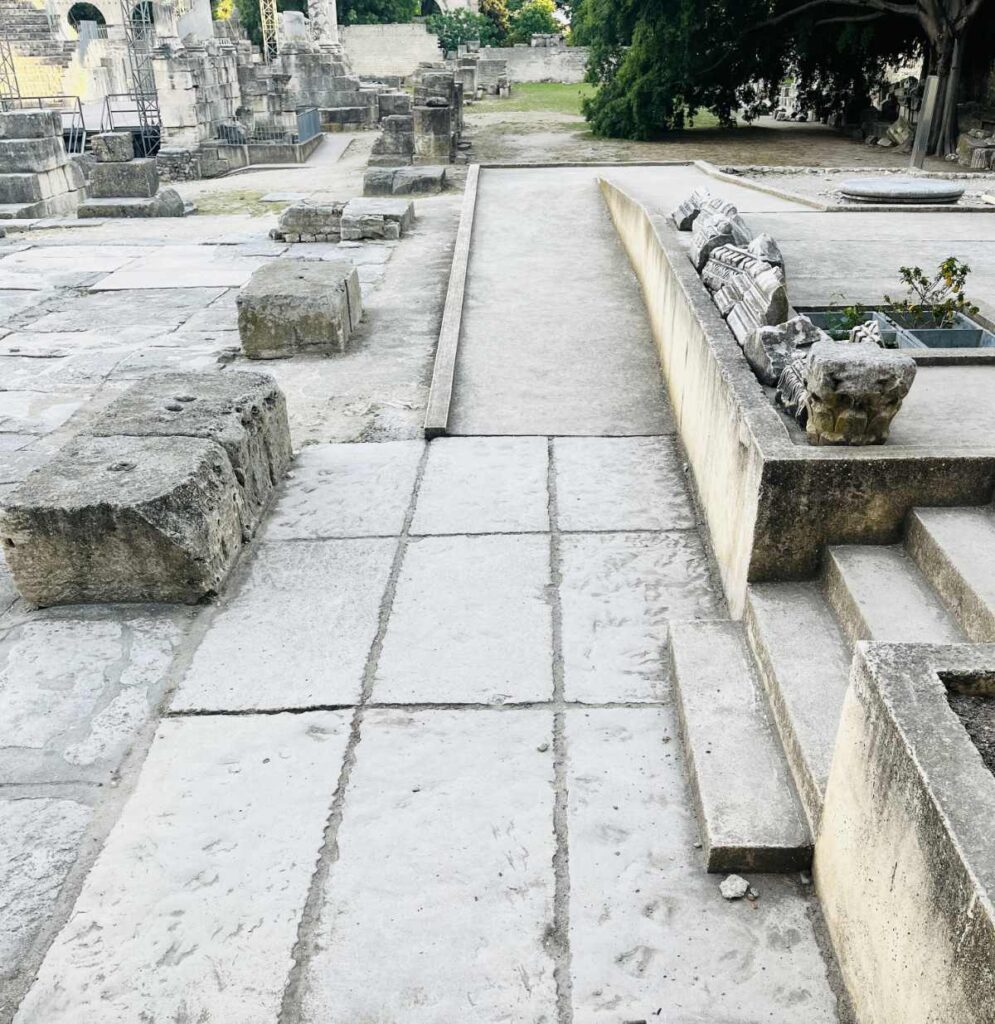
This was Arles’ main burial ground for its well-off citizens for nearly 1,500 years and is located on the old Via Aurelian leading up to the ancient Arles city gates.
The name comes from the Latin Elisii Campi, which is in French “Champs-Élysées” and in English “Elysian Fields”. Alyscamps is open everyday and costs around €5 to enter.
14. Musée Réattu
Three days after Van Gogh moved to Arles in 1888, he visited Musée Réattu and wrote his impressions in a letter to his brother Theo:
“The women really are beautiful here, it’s no joke – on the other hand, the Arles museum is dreadful and a joke, and fit to be in Tarascon – there’s also a museum of antiquities, they’re genuine.”
Van Gogh (original in French)
Thankfully today, the Réattu museum has a much better reputation. The museum owns over 800 paintings and drawings by French artist Jacques Réattu, but also features several works of Van Gogh, Picasso, and much more.

The museum is open everyday except Mondays and costs about €8 per person to enter.
15. Amédée Pichot fountain
Near one of the old gates to the fortified city of Arles, the Porte de la Cavalerie, you will find one the city’s most beautiful fountains called the Amédée Pichot.
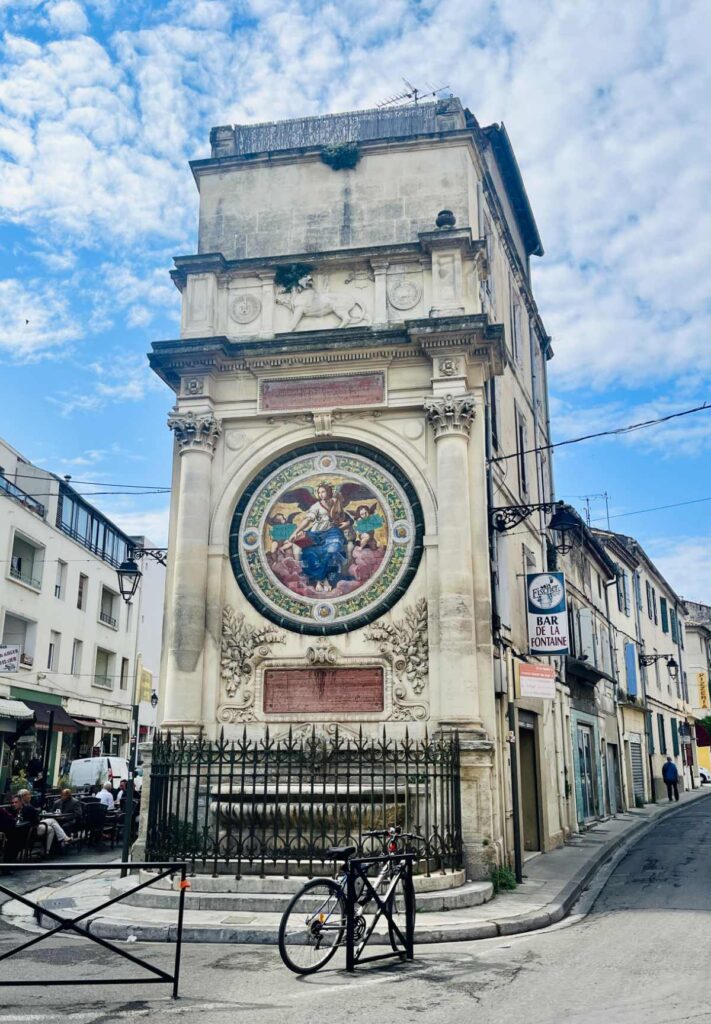
It is dedicated to the historian and novelist Joseph Jean-Baptiste Marie Charles Amédée Pichot who was born in Arles in 1795. The area is also surrounded by a couple of lively restaurants with large terrasses that make a welcome spot for a drink or two.
16. Buy some souvenirs
If you are looking for provençale souvenirs to take back home from Arles, you will be spoilt for choice.
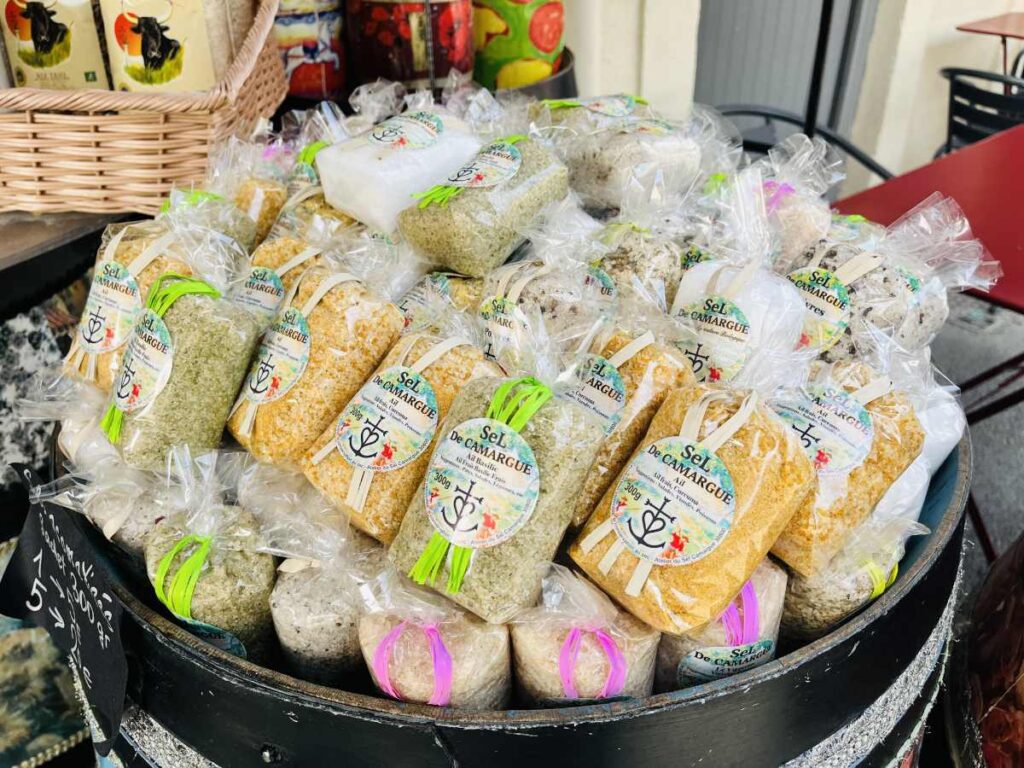
There are several items that are very popular with tourists and locals alike:
- Fleur de sel de camargue – Salt
- Riz de camargue – Rice
- Savon de lavande – Lavender soap
- Confit de fleur de violette – a type of jam made from violet flowers
- Miel de fleurs – honey made from flowers
- Vin des sables de camargue – wine
- Liqueur La Camarguaise – a digestif liquer
- Bière des gardiens – a beer made from rice from the camargue
- Caramel sel de camargue – salty caramels.
You can read more about other souvenirs from France here.
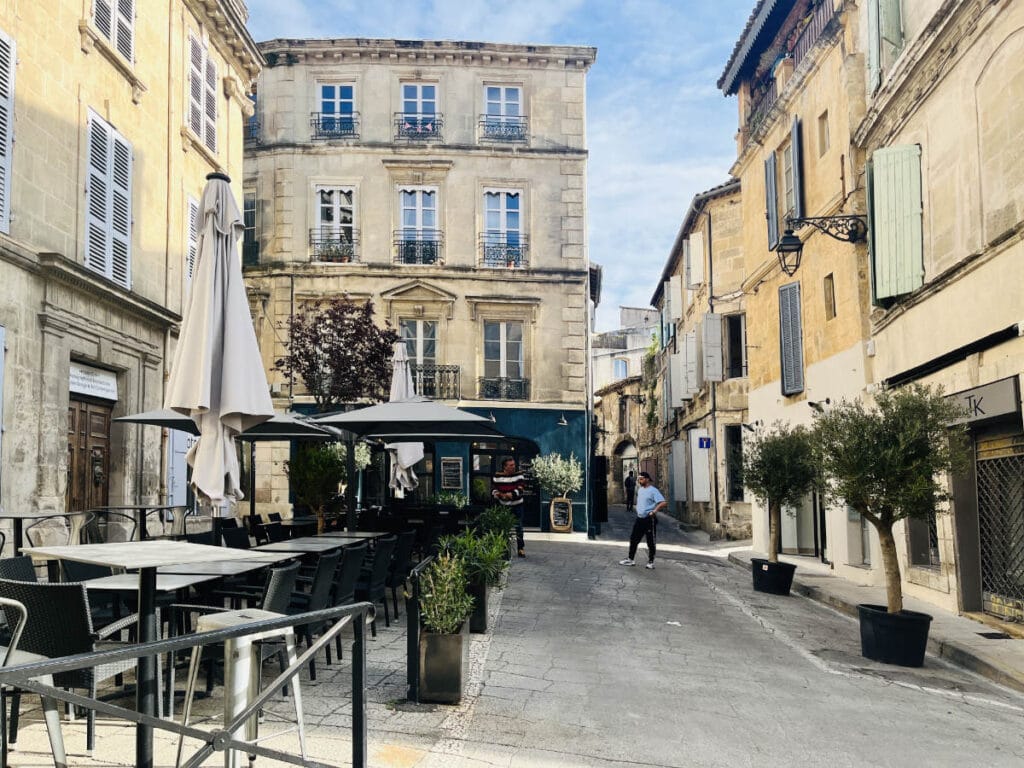
How to get to Arles?
The quickest way to get to Arles is by train as the city has a high-speed TGV train station with direct access from Paris and Marseille.
The closest international airport is in Marseille, from where it takes 50 minutes to get to Arles by train and 1 hour by car. You can also take a tour from Marseille, Avignon or Aix-en-Provence which follows in the footsteps of Van Gogh, visiting Arles, St. Remy de Provence, and more.
How easy is it getting around?
Much of the Arles town center is pedestrianized, with cars restricted to locals. Most of the main attractions are located close together, especially the Roman ruins, as important buildings were placed together in that era.
It can be quite easy to get around, however if you are heading over in the summer months, be aware that it gets quite hot and you will need a good hat.
How many days should you spend?
I recommend spending at least 2 nights in Arles, because there is a lot of see and do, especially if you are a fan of Roman history.
In addition there are several day trips you can take from the area, including the towns of Uzès, Nimes, Toulouse, Montpellier, Sète, Carcassonne, Martigues, etc. which are all within a couple of hours drive.
Where should you stay?
There are some wonderful hotels in the town center of Arles that will allow you to visit all the main attractions on foot.
- €€€ – Hôtel Spa Le Calendal – spa facilities
- €€€€ – Hôtel Arles Plaza – 15 minute walk from the center but has a swimming pool and jacuzzi.
- €€€€€ – Hôtel & Spa Jules César Arles – MGallery Hotel Collection – with swimming pool, hot tub, and sauna.

And if you enjoy a good paella, you will want to head to Arles during the 2nd week of September (as well as in April) to celebrate the Feria de Riz, a festival that takes place to celebrate the rice harvest. There is bullfighting, celebrations and a true fiesta spirit that brings the tourists flocking to this side of the Pyrennées mountains.
If you enjoyed that article, you may like to read more about traveling around Provence. A bientôt!
